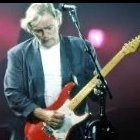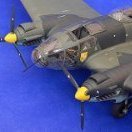Search the Community
Showing results for tags 'F-4'.
-
Next up another Revell kit with a few Tamiya swaps and other borrowed parts and some scratch building. Attempting to make a passable USMC VMFA-321 F-4S in the mid-late 80s low viz look. Wont be 100% accurate but will get it as close as my skills will take me. Already had to chop up instrument panels to resemble navy layout (S has offset scope J is centered so thats my first fail anyway…
-
Morning all, Like 99% of those who enjoy building large scale Phantoms, I've been eagerly awaiting a 1/32nd scale RR Spey powered version for as long as I can remember. There is of course the Wild Hare conversion that usually sells for more than my car is worth (on the rare occasion one actually comes up for sale) and rumours are abound that HK were looking at doing one, but I thought life's too short to wait around any longer and it's time to start hacking about at the classic Tamiya F-4J kit. Before I go any further, it's important to say that this is not going to be wholly accurate and the majority of this is being done with the MkI eyeball and approximate measurements. I'm simply not interested in this (or any of my models for that matter!) being accurate to the nearest half-mill, and therefore what you'll see is something that (hopefully) will look like a British Phantom but won't necessarily be the definitive way to go about such a conversion - you'll need to check @Anthony in NZ's rather epic thread for that! I wasn't going to run a WIP for this as I was concerned about burn-out and failure, but I've actually come a lot further in a short space of time that I had initially anticipated, and I think broken the back of this conversion, so thought I'd share my efforts just in case there's someone else out there considering the same thing... I thought I'd begin somewhere nice and simple, so tackled the belly of the beast and the inlet doors on the underside. The UK Phantoms have these further forward than the US examples, so it was a case of cutting out the new doors in their forward position, and filling the old ones with plastic card blanks: These were then filled, re-scribed and given a quick squirt of primer: Step one complete! The next step was the far trickier intakes. The Speys demanded more air and thus the intakes were significantly wider than the US versions. There is much debate and head-scratching about how exactly the shapes differ, but I've done a bit of digging around and modified mine as I see fit. In 1/32nd scale, my calculations work out that the intakes are roughly 3mm wider at the front than the US examples. Therefore, I sourced some 3mm strip and carefully cut the kit intake sections in half, front to back, adjacent to the grills on the inner edges of the intakes (the pictures will explain this better). Here you can see how much wider the UK version intakes are than the US version - quite a significant gap emerges when test fitted to the unmodified rear sections: To remedy this, the fuselage will of course need widening too, and the shaded area in the picture below shows the section in need of modification: To do this, horizonal cuts are made along the top of the intake trunking, with vertical cuts made to allow the section to be opened up. There is a lower horizontal cut, too, made at the wing root to allow to original kit fixings to mate together for strength whilst allowing the wider intake to slot over the upper wing surface: A wedge of plastic card in then inserted, with the forward-most part being 3mm in width to match the modified intakes: Lots of reinforcement was given to the interior too: I'm going to use FOD guards on mine as life is too short to tackle the notorious intake interiors on this kit, but if you were to have them open a further 'wedge' would be needed to plug the gap seen above. Before I went any further, I wanted to check the modified fuselage would allow the wings to fit - which by luck more than careful calculation they did! The modified intakes were then test-fitted to the modified fuselage: Before they were glued firmly into place and allowed to set for 24 hours: The join wasn't perfect but considering the amount of butchery that went on I was pleasantly surprised. Some Milliput White soon made light work of the affected areas: And after some re-scribing and a shot of primer, things look good! You can see in the picture above I have started work on the back end and opened up the extra doors the Spey versions have on the rear fuselage. I'm going a later version with the pod on the top of the fin, so plans were consulted and a rough shape made for these from plastic card laminates: This still needs an awful lot of refining and surface detail added, but it's a good start. I'm now going to have to concentrate on getting the cockpit done and then I can begin hacking about at the rear end. The Spey exhausts are a fair bit bigger than the US ones, so the hacksaw and filler are at the ready! When done, I'll update this again... All the best, Tom
-
Are there any photos of this F-4D in this scheme around? I can’t find any through Google or Bing... I like it because the 49th TFW was sort of a “reserve-wing” for USAFE. In times of crisis their aircraft would go from Holloman to Ramstein and/or Spangdahlem. This was exercised regularly.
-
This sheet provides the extensive F-4 Phantom airframe data (including panel numbers/labels) for either an F-4B or F-4J. The airframe data included is the painted (open stencil) type of markings commonly seen in the 1960's into the early 1970's on USN/USMC F-4B and F-4J Phantoms. Includes placards for the landing gear, speed brakes, speed brake wells, auxiliary air doors, wing external fuel tanks, and main and nose gear doors. Also includes markings for all pylons, bomb adapter racks (inboard and outboard pylon types), and LAU-7 rail markings. Note that this is not the printed (full letter) style of airframe data - check references for which style of airframe data was applied for a specific F-4. Expected Feb/Mar Now available at: www.AOAdecals.com
- 17 replies
-
- aoa decals
- aoa
-
(and 3 more)
Tagged with:
-
Another single squadron sheet from AOA, this time for F-4J’s of VF-154 Black Knights in the 1970s and covering standard and CAG schemes. Planning for early 2019. Now available at: www.AOAdecals.com
-
I had the opportunity to spend some time with the folks from Sierra Hotel Models while attending the IPMS Nats. Great folks all; Michael, Patrick, Casey and Rich. Unfortunately Erik was unable to attend so maybe next time. Here are some photos of their “revised†Intake/Ramp set for the latest tool Revell F/RF-4C/E/F. I say revised because they have replaced the engine “face†with a newly tooled piece.The new piece is totally redesigned with blades set for the proper direction of rotation CSIDG “bullet†fairing and support struts. The detail is IMO totally awesome see for yourself. I have included a couple of pictures of both the new on left and the original offering. Exhaust Nozzles and AB Section in next post
- 16 replies
-
- F-4
- F-4 Phantom
-
(and 5 more)
Tagged with:
-
In my bid to build a “more†accurate F-4 Phantom II cockpit than is currently available several interesting facts have come to light. The latest being that the Tamiya cockpit floor depth is too shallow by about 4 scale inches while the side consoles are correct; both with respect to the canopy sill. Out of that comes the issue that nearly all ejection seats available are sized to sit at the proper height when installed in the Tamiya cockpit and will sit too low in a cockpit with the correct floor depth. So I dug out all of the Phantom ejection seats I have in my stash and here is what I have found. Aires has an Mk 7 seat without harness in their F-4J cockpit set and available separately. Quick Boost has the Aires Mk 7 seat with harness. Otherwise it is the same as the Aires seat. Paragon has an Mk 7 seat that the height is sized to fit the Revell cockpit or a correct depth cockpit. Reheat Models has an Mk 7 seat that like the Paragon is sized for the deeper cockpit floor. Eduards Mk 7 seat appears to be better sized to fit the deeper cockpit but is “made†for the Tamiya kit. Verlinden does an Mk 7 seat that is sized to fit the Tamiya cockpit. TAC Scale Mk 7 sized to fit Tamiya True Details has an Mk 7 seat that is sized to fit the Tamiya cockpit. AMS Resin has an Mk 7 seat (USN/USMC and USAF versions) sized for the Tamiya cockpit. AMS Resin has an H5 version also made for the Tamiya cockpit. Other than Aires I have not included the seats that come in other AM cockpit sets as the cockpit except the Legend set are designed for the Tamiya kit so the seats are sized to fit them. Here are photos for comparison; in the second “lineup†I have included the Tamiya seat. IMO it appears that the Paragon, Reheat and Eduards seats are better suited for the Revell cockpit or a scale depth cockpit while the others are best suited for the Tamiya cockpit. Disclaimer; I make no attempt to extol the virtues of one over another only show the height differences. Barry
- 30 replies
-
- F-4
- F-4 Phantom
-
(and 3 more)
Tagged with:




